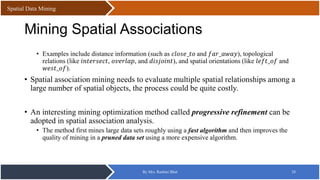This document discusses spatial data mining. It defines spatial data as data pertaining to the geographic location of features and boundaries on Earth. Spatial data mining involves discovering patterns from large spatial datasets and can be used for applications like GIS, geomarketing, and natural disaster prediction. Some key techniques of spatial data mining include spatial classification, clustering, and detecting trends and autocorrelation. The document also discusses spatial data structures like grids, R-trees, and z-ordering which are used to store and index spatial data.

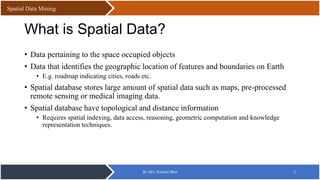
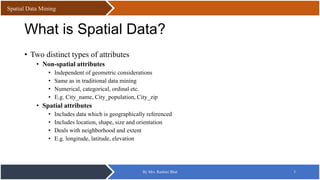




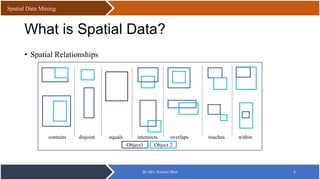

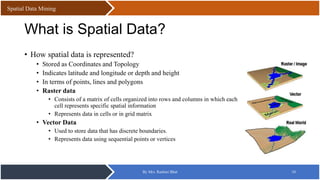


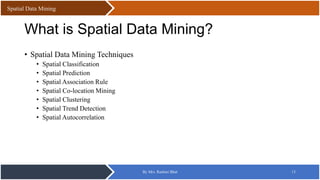
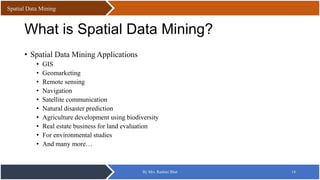

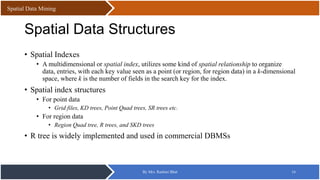
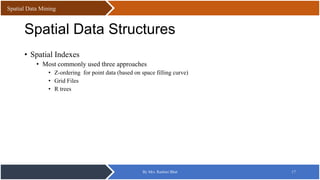


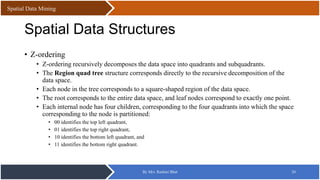

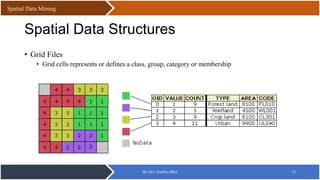
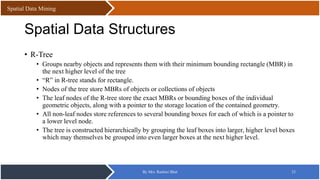



![Mining Spatial Associations
• Similar to the mining of association rules in transactional and relational databases,
spatial association rules can be mined in spatial databases.
• A spatial association rule is of the form of
𝐴 ⇒ 𝐵 𝑠%, 𝑐%
where
• 𝐴 and 𝐵 are sets of spatial or nonspatial predicates,
• 𝑠% is the support of the rule, and 𝑐% is the confidence of the rule.
• e.g. the following is a spatial association rules
𝒊𝒔_𝒂(𝑿, "𝑺𝒄𝒉𝒐𝒐𝒍") ∧ 𝒄𝒍𝒐𝒔𝒆_𝒕𝒐(𝑿, "𝒔𝒑𝒐𝒓𝒕_𝒄𝒆𝒏𝒕𝒆𝒓") ⇒ 𝒄𝒍𝒐𝒔𝒆_𝒕𝒐(𝑿, "𝒑𝒂𝒓𝒌") [𝟎. 𝟓%, 𝟖𝟎%]
• This rule states that 80% of schools that are close to sports centers are also close to parks, and 0.5% of
the data belongs to such a case.
By Mrs. Rashmi Bhat 27
Spatial Data Mining](https://image.slidesharecdn.com/module6spatialdatamining-220731074650-d7c2aca8/85/Spatial-Data-Mining-27-320.jpg)
